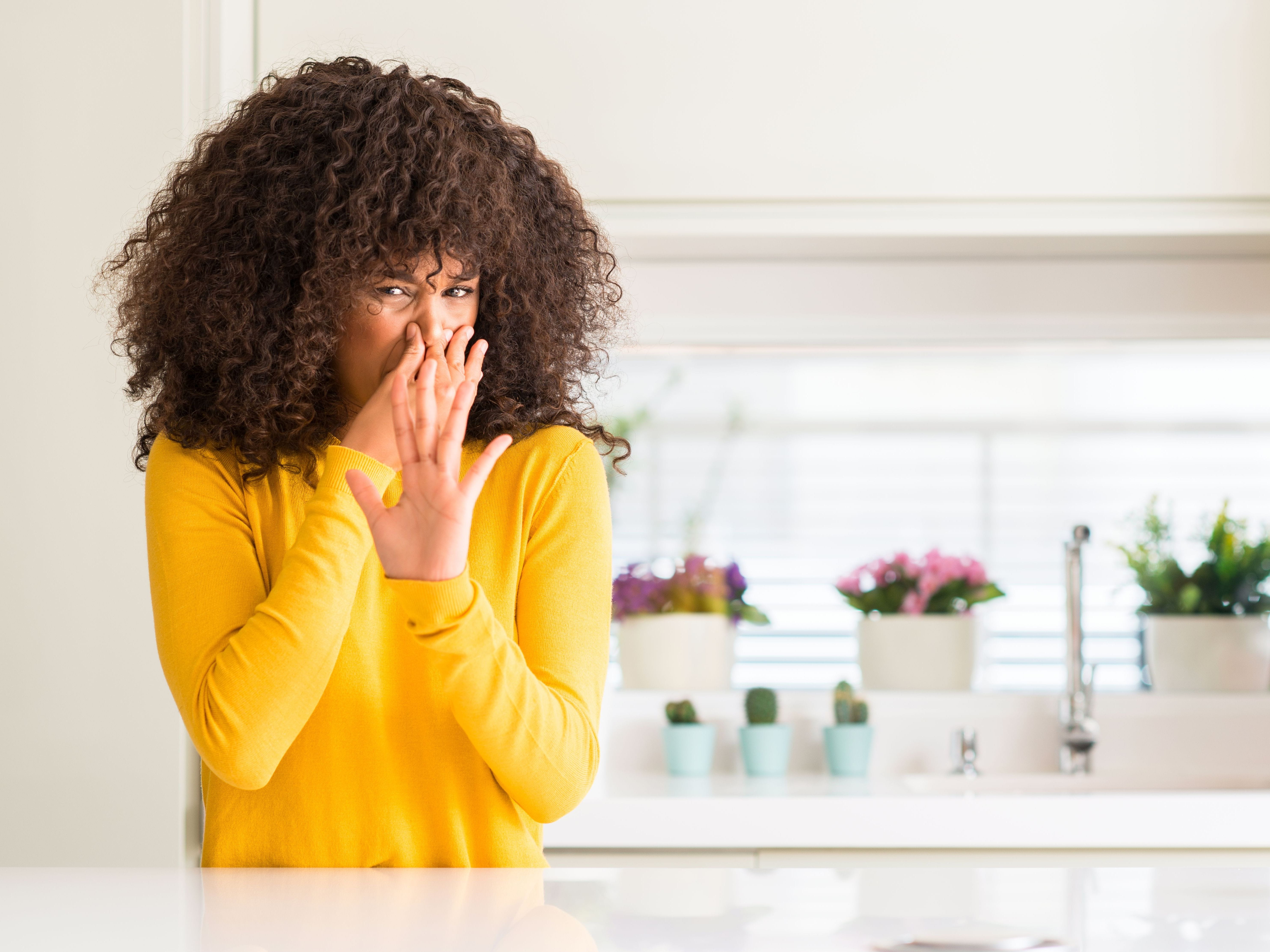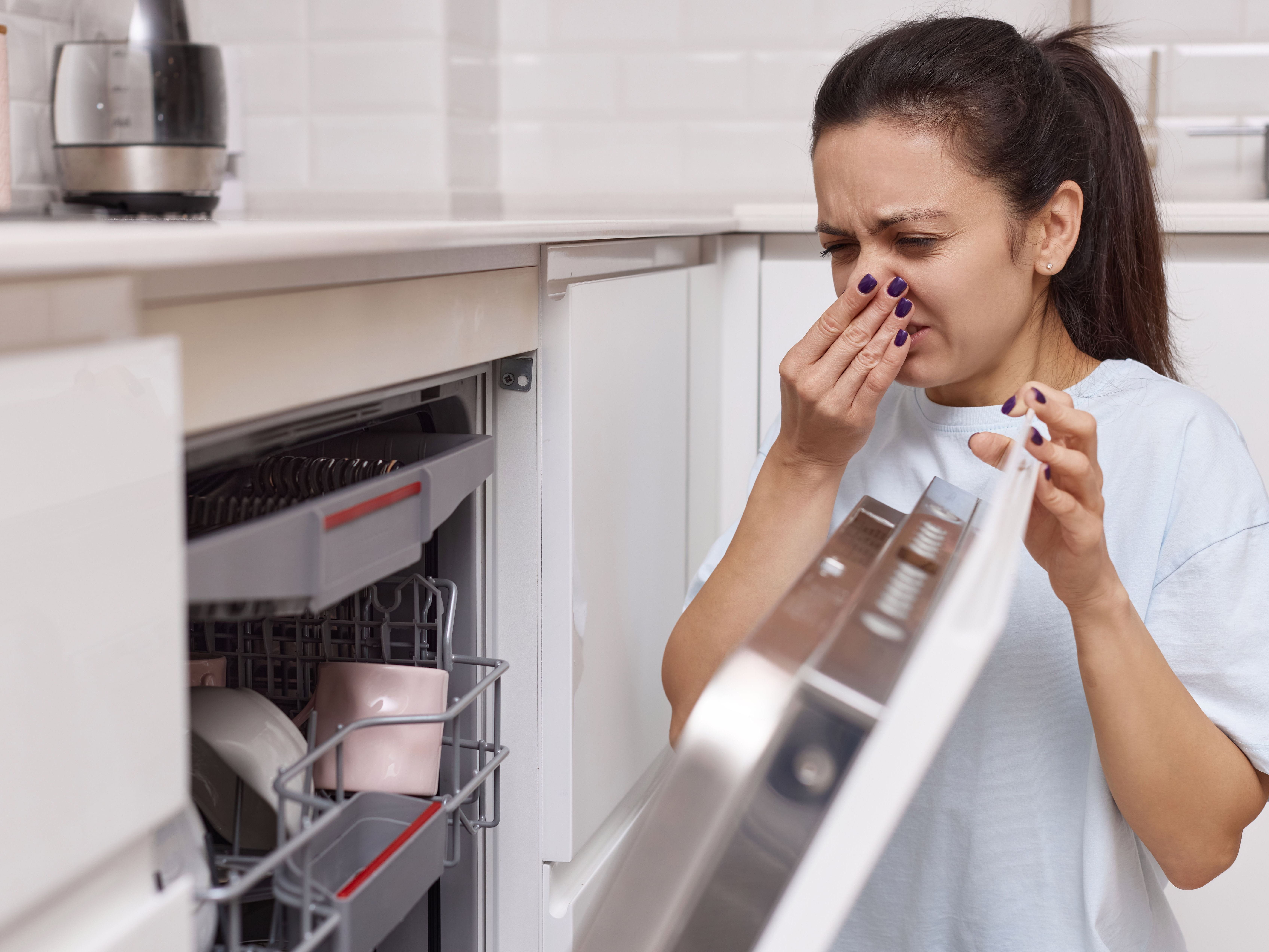What’s That Smell? – Identifying Unknown Fumes in Your Home

The Bottom Line
There are many sources of bad smells in and around the home including spoiled food, mold, volatile organic chemicals, leaky or backed-up pipes and drains, and pet odors. Mixing some household cleaners such as bleach and ammonia or acid can produce toxic fumes. Some toxic fumes such as carbon monoxide are odorless. Symptoms of toxicity will depend on the gas.

Something smells weird in my home. What does that mean?
Weird or bad smells in the home can come from many sources including household products. Bad smells may be from spoiled or rotten food. Discarded food and other items in your trash can cause a foul smell if left inside for too long. Your garbage disposal or dishwasher can smell due to mold and rotten food bits. Leaky or backed-up pipes or drains in the kitchen and bathroom can produce a musty, sewage-like smell.
Some other common sources of odor include paints, varnishes, wax, and moth repellants, as well as cleaning, disinfecting, cosmetic, degreasing, and hobby products (such as glues, adhesives, and permanent markers). These all contain volatile organic chemicals, which evaporate easily and so emit gases at normal temperatures. Other products containing volatile organic chemicals – including automotive products, pesticides, building materials, and wood preservatives – are more likely to be found in a shed or garage.
Fumes may be the result of mixing household cleaners, such as chloramine gas from mixing bleach (sodium hypochlorite) and ammonia, or chlorine gas from bleach and an acid (such as an acidic toilet bowl cleaner). Ammonia is a colorless liquid with an odor described as smelling like urine, sweat, or decaying fish. Do not mix household cleaners as fumes they create may cause potentially dangerous fumes.
Symptoms of volatile chemical, ammonia, chlorine, and chloramine fume exposures can include irritation of the eyes, nose, and throat, coughing, difficulty breathing, headache, and dizziness. Pet odors from pet dander or litter boxes or dog beds are another common source of bad smells in the home. Dead or dying indoor plants can smell funny. A burning smell could mean there is an electrical problem in the house.
How to tell if a bad smell is dangerous
It is not always easy to know if a bad smell is dangerous. If it smells like rotten eggs, sewage, or burning, it may be dangerous. However, some dangerous fumes such as carbon monoxide have no odor at all.
Do I have a gas leak?
If the smell of sulfur or rotten eggs is strong, it is very likely that you have a gas leak. Other signs that gas is leaking include a whistling or hissing sound from an appliance, as well as bubbles resulting from the leaked gas rising through standing water.
What does natural gas smell like?
Natural gas is odorless, but an odorant that smells like rotten eggs is added to aid in the detection of a leak.
What does mold smell like?
Mold can develop in a moist environment. It can occur anywhere in the home, but especially in bathrooms and laundry rooms. Mold smells musty and damp. It may also smell stale, earthy, or like rotten wood or wet socks.
Does carbon monoxide have a smell?
No, carbon monoxide is odorless. It is best to have carbon monoxide detectors in your home and workplace. If all or many people in your home experience similar symptoms at the same time, you should suspect the possibility of carbon monoxide poisoning. These symptoms may include headache, weakness, nausea, vomiting, dizziness, disorientation, lethargy, and loss of consciousness.
What to do if you have questions about an unknown fume
If you are very concerned about an unknown fume, you should open windows and doors to ventilate your home and leave the building. If you smell an unknown fume, have symptoms you think might be due to an unknown fume, or if you have a question about unknown fumes, help from experts is available through the webPOISONCONTROL online tool and by phone at 1-800-222-1222. Poison Control’s expert guidance is always free, confidential, and available 24 hours a day.
Wendy Klein-Schwartz, Pharm.D., MPH
Clinical Toxicologist
Poison Control Media Information
Did you find this page helpful? If so, we need your support. Poison Control is in constant competition with misinformation online. Links to www.poison.org or our webPOISONCONTROL triage tool from other websites and blogs help internet searchers quickly find accurate information and Poison Control’s contact information in an emergency. If you use the content from this page, please provide attribution via a link back to this page, www.poison.org, or https://triage.webpoisoncontrol.org/#!/exclusions. By doing so, you could save a life. Thank you!
Poisoned?
Call 1-800-222-1222 or
Prevention Tips
- Throw out expired food.
- Keep your garbage disposal and dishwasher cleared of mold and food bits.
- Take out the trash regularly
- Clean up after pets.
- Be sure pipes, drains, and appliances are working properly. Fix leaks when they appear.
- Be sure lids are tightly secured on volatile chemicals.
- Do not mix household products without checking if the combination can produce toxic fumes.
- Look for mold, especially in bathrooms and laundry rooms, and eradicate it immediately.
- Install and maintain your carbon monoxide detectors.
This Really Happened
A 25-year-old woman was cleaning an apartment she had recently moved into. She was scrubbing the kitchen counter and sink with a bleach-containing product. For stubborn stains in the sink, she also used ammonia. She immediately noticed a chlorine-like smell but continued cleaning. When she experienced eye, nose, and throat irritation and coughing, she opened the kitchen windows and left the room. She then looked at the product labels and noted the warning not to mix bleach and ammonia. She called Poison Control to find out what to do. The poison specialist informed her that mixing ammonia with bleach forms chloramine gas. The poison specialist asked her about her symptoms and determined that the eye, nose, and throat irritation had resolved after leaving the kitchen. Her cough had also improved. The poison specialist confirmed that opening the windows and leaving the kitchen had been the appropriate course of action. Since the symptoms were improving, the woman could stay at home. When the poison specialist followed up an hour later, all symptoms had resolved.For More Information
Mold. US Centers for Disease Control and Prevention. Accessed August 16, 2024
Odors | Frequently Asked Questions (FAQ). U.S. Department of Health & Human Services. Accessed August 16, 2024.
References
Poisoned?
Call 1-800-222-1222 or
Prevention Tips
- Throw out expired food.
- Keep your garbage disposal and dishwasher cleared of mold and food bits.
- Take out the trash regularly
- Clean up after pets.
- Be sure pipes, drains, and appliances are working properly. Fix leaks when they appear.
- Be sure lids are tightly secured on volatile chemicals.
- Do not mix household products without checking if the combination can produce toxic fumes.
- Look for mold, especially in bathrooms and laundry rooms, and eradicate it immediately.
- Install and maintain your carbon monoxide detectors.
